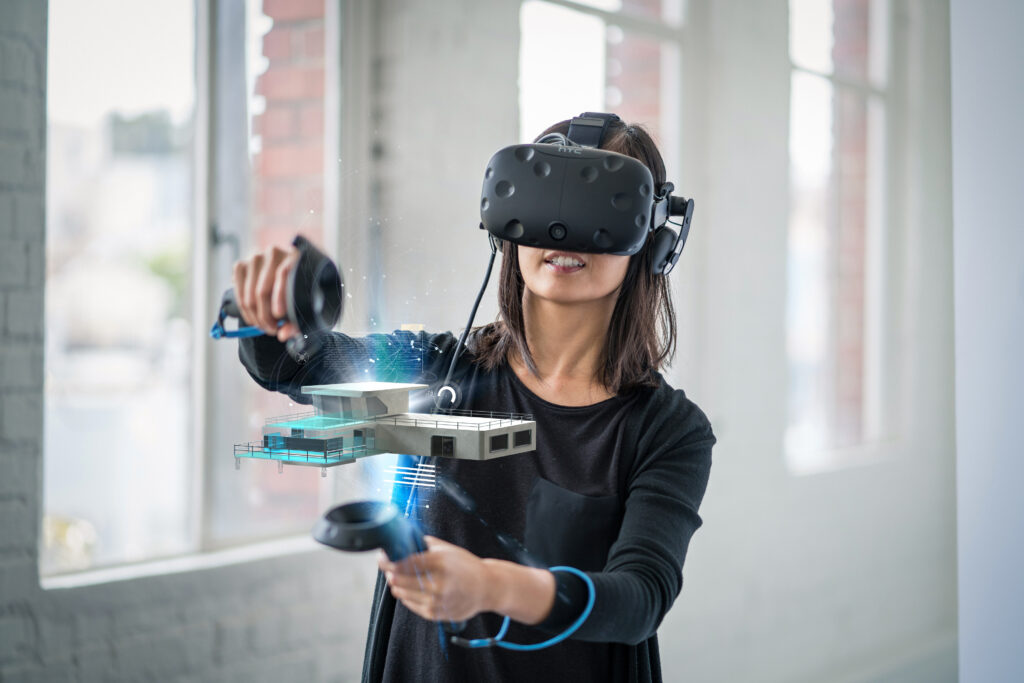Why learning is better with VR
Virtual Reality (VR) has already had a significant impact in many industries: from reducing surgical risk and pro athlete injury to preparing astronauts to face emergencies in space. How is VR doing all that? The answer is simple: by revolutionizing training processes, improving people’s skills and competencies more effectively than ever before.
The untold story of VR, focus and memory
Virtual reality uses computer technology to generate an immersive simulated environment. As well as virtual gaming worlds, it can be used to recreate real-world locations and facilities, objects, equipment and even people.
Headlines connecting virtual reality with the advent of the metaverse mean that there is often a conflation between VR technology and the gaming world. It is shortsighted, however, to assume virtual reality’s capabilities are limited to this single application.
In a world full of outside stimuli – with our attention constantly diverted – people’s ability to focus 100 percent on a given task is severely diminished. One of virtual reality’s greatest strengths is its capacity to fully immerse participants, eliminating all forms of distractions. Beyond blocking external stimuli, virtual reality also actively engages its users by creating exciting and memorable 3D experiences.
According to Amaury La Burthe, CEO and Creative Director of Mantu brand Novelab, “VR increases the rate of memorization because it allows the brain to create associations between the subject and the environment in which they are located. The way that VR engages the body promotes the retention of information and the involvement of the user in the experience.”
In a University of Maryland study, virtual reality’s impact on learning was assessed by asking participants to memorize and recall faces. They were shown faces either in 2D or in VR, with the VR participants being notably more accurate in their recall. 70 percent of the VR users believed that their strong sense of spatial awareness contributed to their success.

When a person uses virtual reality to learn new information, they are activating several human senses which would otherwise remain disengaged. While traditional 2D displays, such as books or videos, may stimulate the visual and/or auditory senses, VR displays further engage the human senses related to body awareness, movement, and balance. Mobilizing these senses can improve memory recall and knowledge retention, which helps explain why virtual reality is radically improving training and onboarding processes across a broad spectrum of sectors.
Learning by doing
The experiential nature of virtual reality technology allows users to test knowledge and skills in simulated real-world situations. This makes it a particularly great training tool for learning difficult, intricate, or complex competencies, such as surgical procedures: the Johnson and Johnson Institute reported that VR-trained medical students performed 233 percent better than those trained using passive learning tools.
This type of experiential learning is important because it allows people to receive hands-on experience in a low-pressure environment, creating a safe space to learn, reflect and critically assess performance.
To better prepare associates for their roles, American retailer Walmart includes virtual reality in their onboarding program. They developed VR training modules which replicate a wide variety of situations: angry customer interactions, managing product inventory, and even high-stakes sales days like Black Friday.
“When you watch a module through the headset, your brain feels like you actually experienced a situation. We’ve also seen that VR training boosts confidence and retention while improving test scores 10 to 15 percent.”
Andy Trainor, Senior Director of Walmart U.S Academies.
Virtual reality simulations enable people to practice reactivity, and stress test their service skills, which can be particularly helpful in preparing for unpredictable situations. Individuals are also empowered to experiment with new ways of doing things, since they can safely test how different actions can lead to different outcomes.
VR and productivity
According to the US Office of Personnel Management, a person’s time to productivity upon joining a company is based on three factors: prior skills and knowledge, onboarding and training program quality, and managerial support and assistance.
Many companies experience challenges in creating successful training and onboarding practices. Research from more than 200,000 exit interviews indicates that 11.2 percent of people cite poor training as the reason they left their job.
The world’s largest aerospace company, Boeing, has found virtual reality to be key in delivering successful training outcomes. Building aerospace products is an intricate process and errors can be fatal: proficient training is therefore particularly important in this sector. By running virtual reality modules, Boeing’s trainees are learning faster and more effectively – believed by Boeing to reduce training time up to 75 percent per person.

Saudi Arabian Oil Company Aramco has also emphasized virtual reality’s importance for their operations: their VR training program has reduced their engineers’ time to competency from seven years to three-to-four years.
“Learning technologies really have helped us a lot to bridge the experience gap between the experienced professionals and also simplify certain concepts that are very hard to understand and visualize.” Salam Salamy, Senior Petroleum Engineering Consultant and Administrator at Aramco.
Increasing time to productivity improves a team’s efficiency, their ability to meet deadlines, and even their capacity for growth.
Championing neurodiversity with VR
Using virtual reality to teach and test can also promote a more diverse and inclusive workforce. According to the Upskill Ultimatum report, more than half of respondents believe that immersive technology is essential to support and encourage neurodiverse talent.
One study found that using virtual reality as a learning tool can support neurodivergent individuals due to its provision of improved learning opportunities for those who process sensory input differently. This includes people with Attention Deficit Hyperactivity Disorder, Post-Traumatic Stress Disorder and Autism Spectrum Condition.
Rob Enslin, President of Global Customer Operations at Google Cloud, highlights that the neurodiverse community often experience barriers in recruitment and onboarding; needing additional time to respond to questions or to complete a test for example. Today, Google Cloud is seeking to remove these barriers and find new ways to enhance support for their existing autistic community.
Enslin confirms that the need for new talent is becoming increasingly crucial in the fast-paced and fast-growing technology industry. Creating accessible and equitable hiring and onboarding processes is therefore in companies’ best interest – it enables them to tap into a talent pool which has been largely overlooked.
Virtual reality enables new methods of assessment to emerge: companies can better understand the value of this talent pool once they are appraised on the equitable playing field VR has facilitated. Moreover, as Enslin points out, “with a team that is more representative of the diverse customers we serve, we will also create better products, services and experiences for our customers.”
Given virtual reality’s immersive and engaging nature, it is an excellent tool for developing new skills and acquiring knowledge. Immersive technologies provide unique opportunities for companies to empower their talent community while effectively and efficiently preparing them for their role.
Learning through virtual reality enables stronger performance, increases memory recall, and improves time to productivity. Implementing this technology in recruitment, onboarding and training can also help attract and retain neurodivergent candidates.